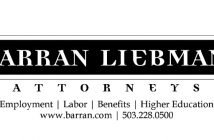Increasing Net Profit & Cash Flow
What is your desired net profit? A financial forecast is a tool that allows you to use your resources where they are most needed. By forecasting properly, you can control the cash flow of your business instead of it controlling you. A lack of planning and control of cash resources is the reason most often given for the failure of many
small businesses.
Not just a necessary internal tool, financial forecasting is often used by lenders, vendors or investors to assess your business’s stability before they agree to do business with you.
A good financial forecast will incorporate historical data to help determine future trends. You, the leader, will use logical methods for increasing revenues and adjusting expenses in future years. Here are a few things that are often overlooked but are good to keep in mind:
• Increase your estimates for advertising and marketing costs since they always escalate
beyond expectations.
• Increase your estimates for legal, insurance and licensing fees since they’re very hard to predict without experience and almost always exceed expectations.
• Keep track of direct sales and customer service time as a direct labor expense even if you’re doing these activities yourself because you’ll want to forecast this expense when you have more customers.
• Forecast revenues using both a conservative case and an aggressive case. If you’re like most entrepreneurs, you will constantly fluctuate between conservative reality and an aggressive dream. By building two sets of revenue projections, you’ll force yourself to make conservative assumptions and then relax some of those assumptions for your aggressive case.
Use key ratios as a reality check. Here are just
three examples:
• Gross margin. This figure is a percentage that can show you if your aggressive assumptions are unrealistic. Beware of assumptions that make your gross margin increase impossibly (e.g. from 20 percent to 50 percent). The gross margin represents your sales revenue less your cost of sales. Cost of sales can include direct materials, direct labor, payroll taxes and insurance. It can also include indirect costs directly related to the sale of the product but not selling, general or administrative costs. There should be an increase in the gross margin percentage as your sales grow.
• Operating profit margin. You should expect positive movement with this metric. As revenues grow, overhead costs should represent a smaller portion of total costs and your operating profit margin should improve.
Quick Ratio. The quick ratio, also referred to as the acid test ratio is a gauge of the short term liquidity of a firm. It is helpful in measuring a company’s short term debts with its most liquid assets. Most lenders or investors will be very interested in this. If you’re planning for growth, you may also want to budget for utilizing some sort of debt instrument (conventional loan, line of credit, outside investors, etc.) for new equipment, operating capital or research
and development.
Contributed by the CFO In-sourcing team at ProCFO. James Jans, Scott Lauray and Steven Bahr.
ProCFO, Complete Financial In-sourcing
780 NW York Dr Suite 102, Bend, OR 97701
541-728-0444, www.ProCFO.com





